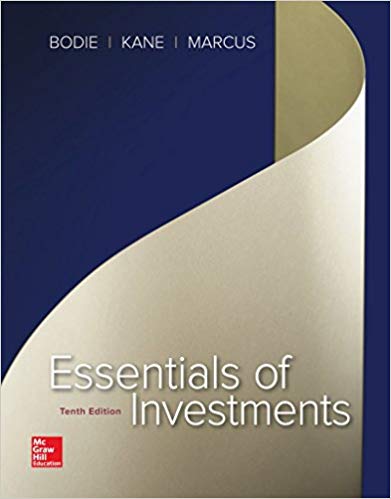Turn back to Table 6.3 and consider these three-year strategies: Three-In (fully invested in the risky portfolio
Question:
TABLE 6.3: Two-year risk premium, variance, Sharpe ratio, and price of risk for three strategies
.png)
a. Which strategy has the lowest Sharpe ratio?
b. Which strategy provides the highest price of risk?
c. Suppose your risk aversion coefficient is A = 2, the expected return on the risky portfolio is 10%, the standard deviation of the risky portfolio is 20%, and the T-bill rate is
4%. If you were allocating your complete portfolio in any year between Three-In and T-bills, what fraction would you devote to Three-In?
d. If you were allocating your complete portfolio in any year between Third-In-Three and T-bills, what fraction would you devote to Third-In-Three?
e. Is there any difference in the complete portfolios that you find in parts (d) and (e)?
f. Is the rational allocation to the risky portfolio for a one-year investor any different than it is for a longer-term three-year investor? In other words, does "time diversification" imply that long-term investors should devote a higher fraction of their investment budget to the risky portfolio?
The expected return is the profit or loss an investor anticipates on an investment that has known or anticipated rates of return (RoR). It is calculated by multiplying potential outcomes by the chances of them occurring and then totaling these... Portfolio
A portfolio is a grouping of financial assets such as stocks, bonds, commodities, currencies and cash equivalents, as well as their fund counterparts, including mutual, exchange-traded and closed funds. A portfolio can also consist of non-publicly...
Step by Step Answer:

Essentials of Investments
ISBN: 978-0077835422
10th edition
Authors: Zvi Bodie, Alex Kane, Alan J. Marcus





